Non-drying, Sticky Hydrogels for the Next Generation of High-Resolution Conformable Bioelectronics.
Francisca M. Carvalho
Pedro Lopes
Manuel Carneiro
Arménio Serra
Jorge Coelho
Aníbal T. de Almeida
Mahmoud Tavakoli
This work addresses two well-known problems of tissue-interfacing hydrogels, i.e. rapid drying and skin adhesion. These are considered as the main barriers against the wider application of hydrogels in many fields, including wearable bioelectronics. We demonstrate for the first time, a hydrogel with a double solvent that is softer-than-the-skin (Compression Young Modulus = 3.6 kPa), yet highly stretchable (>500%), non-drying, skin-adhering, with a skin-electrode impedance lower than the gold-standard Ag/AgCl electrodes, skin-friendly, and transparent. This combination of properties has not been demonstrated before but is necessary for the widespread use of hydrogel electrodes. Various formulations of the double-network GlycerolPolyacrylamide hydrogel are fully characterized, in order to enhance skin-adhesion, softness, liquid content retention, and Signal to Noise Ratio (SNR). We then demonstrate a double-layer stretchable e-textile architecture, that embeds a large number of these electrodes, as a multinode gateway for high-resolution bi-directional data exchange between the body and bioelectronics, and show proof-of-concept applications in functional neuromuscular electrostimulation (FES) of the forearm, and wearable monitoring of brain, heart, and facial expressions
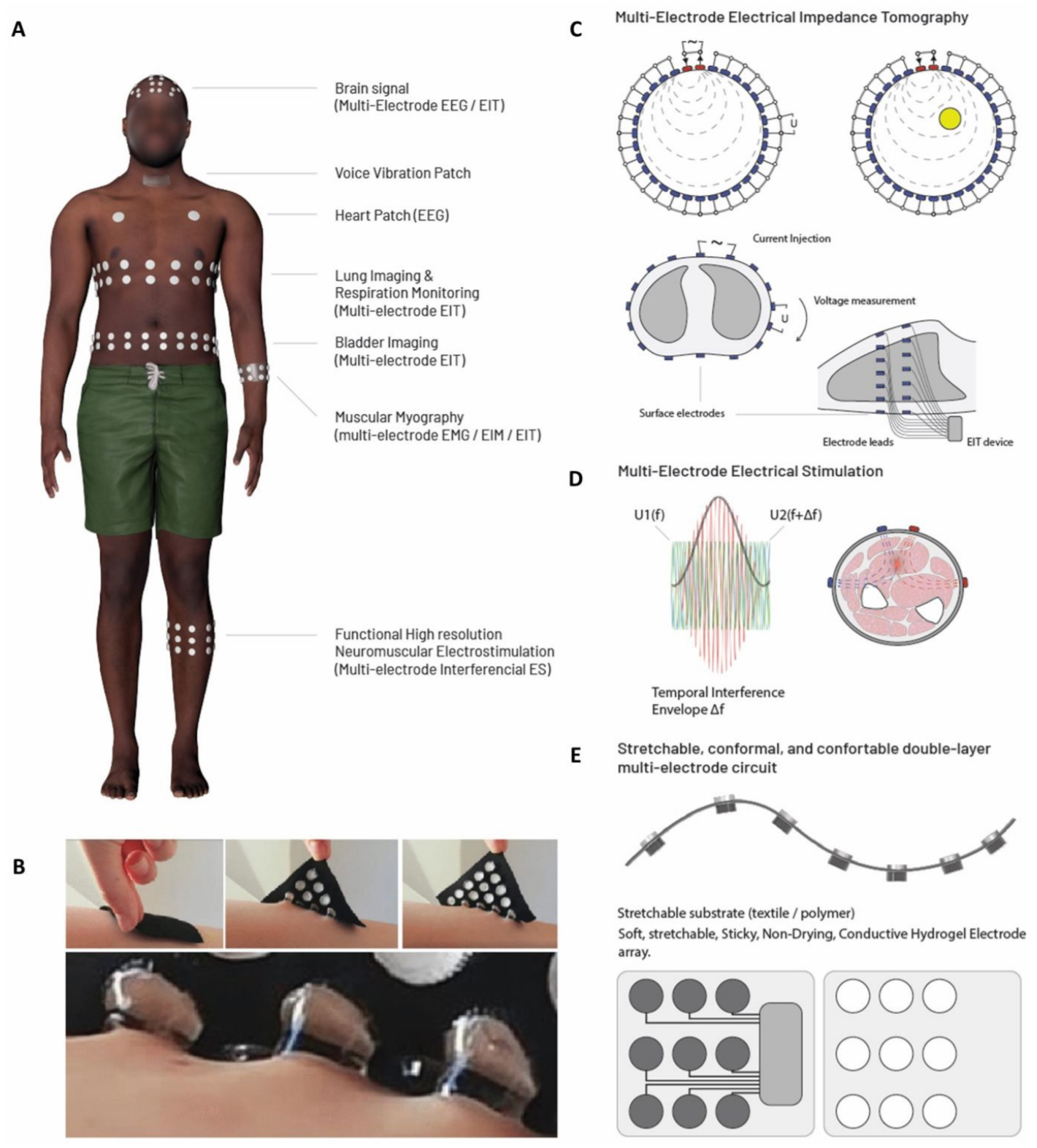
A) Application examples of sensor patches that can enable a bidirectional communication between the body and exterior electronics systems. B) Schematics of the principle of Multi-electrode Electrical Impedance Tomography: injecting electrical current and measuring voltage potentials. C) Schematics of Multi-electrode neuromuscular Electrical
Stimulation D) Example of an e-textile patch with an array of integrated adhesive hydrogel electrodes, detaching from the skin. E) Schematics of multi-electrode double-layer circuit with hydrogel electrodes in the skin contact side of the patch.
Hydrogel Functionality. A) Representation of the hydrogel network and double solvent and its interaction with the skin epidermis. B) Young’s Modulus of the biological tissues and cells against the commonly used materials in bioelectronics, and Hydrogels. Figure adapted from 60. C) Peeling off the highly stretchable and adhesive Hydrogel from the skin. D) Skin reaction to the hydrogel electrode compared to the Ag/AgCl electrode. E) Hydrogel potential
variance with finger movement. F) Hydrogel potential variance with facial expressions when applied on the forehead.
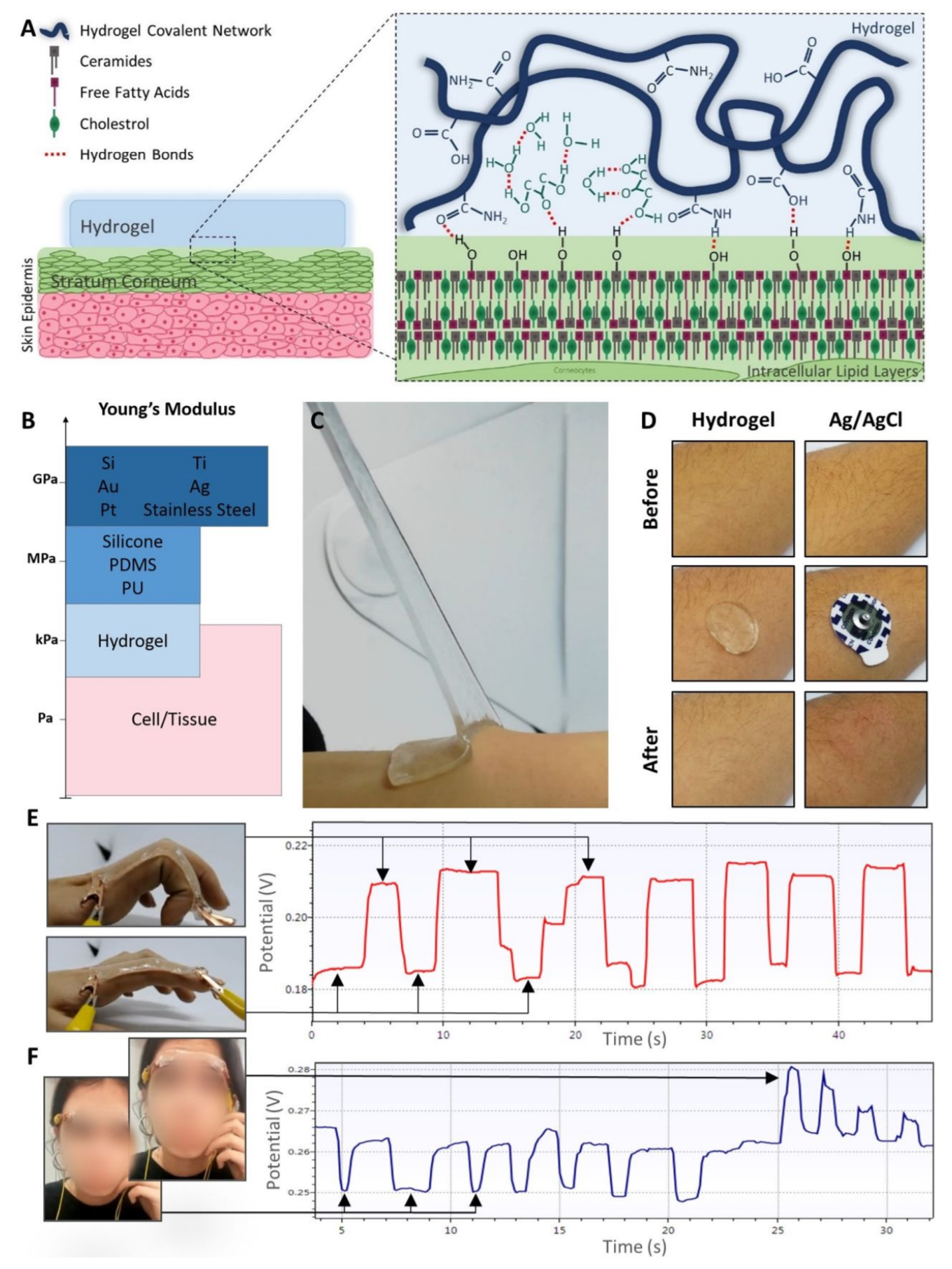
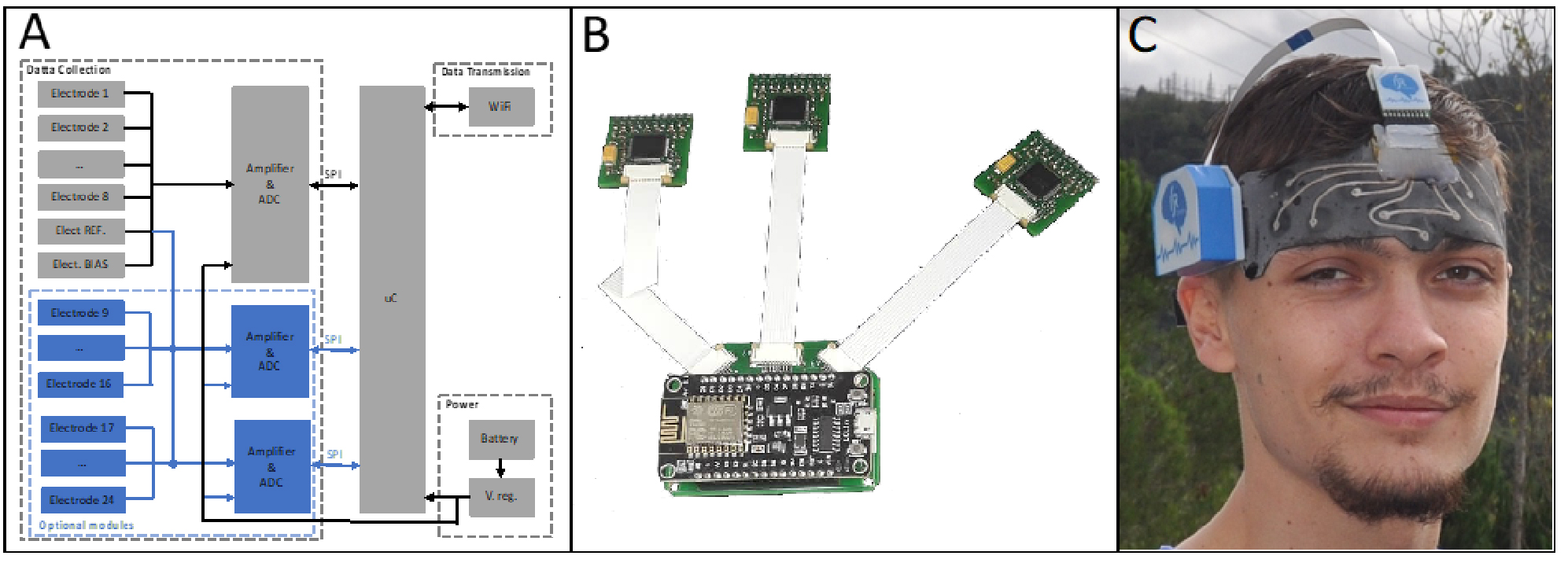
A: Block diagram illustrating the main components of the device, comprising data collection and data transmission blocks, power circuit and data processing unit. B: The modularity of the system allows for several amplifiers to be connected simultaneously to the same processing and transmission board. C: Working prototype of the EEG acquisition system proposed in this work.
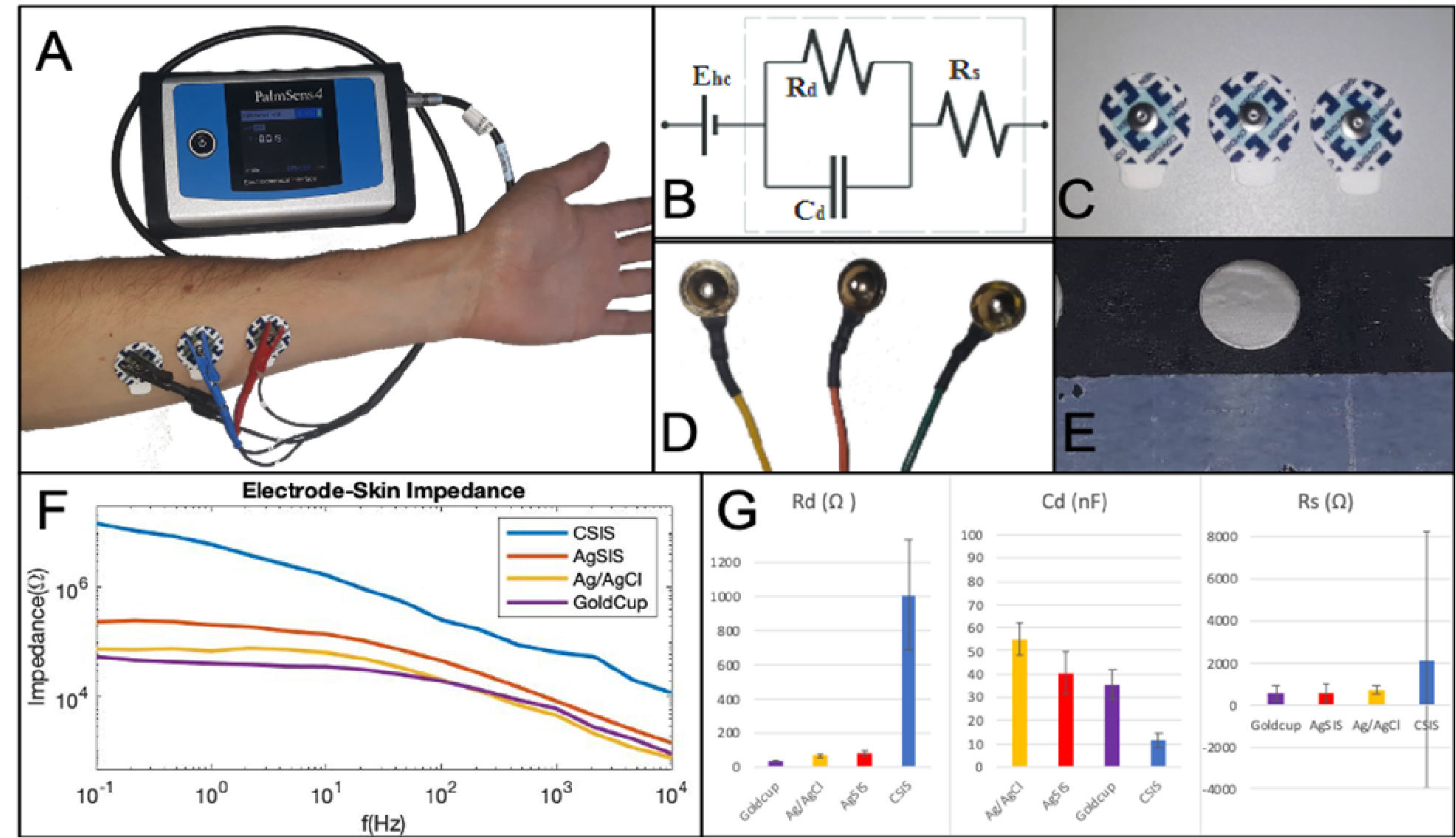
Electrode-skin impedance analysis and electrode characterization. A: experimental setup – two electrodes placed over the subject’s forearm are connected to the impedance analyzer and a frequency sweep is performed. B: single electrode/skin interface simplification circuit for the system’s equivalent model. C: Gold-standard commercially available pre-gelled Ag/AgCl and D: Goldcup electrodes. E: Novel conductive ink electrodes. F: Bode plots of the electrode-skin impedance of each of the tested electrodes (Ag/AgCl, Goldcup – interfaced to the skin via a layer of Ten20 conductive paste, CSIS and AgSIS). G: Components of the equivalent electrode-skin model (Rd, Cd and Rs) for each of the tested electrode materials.
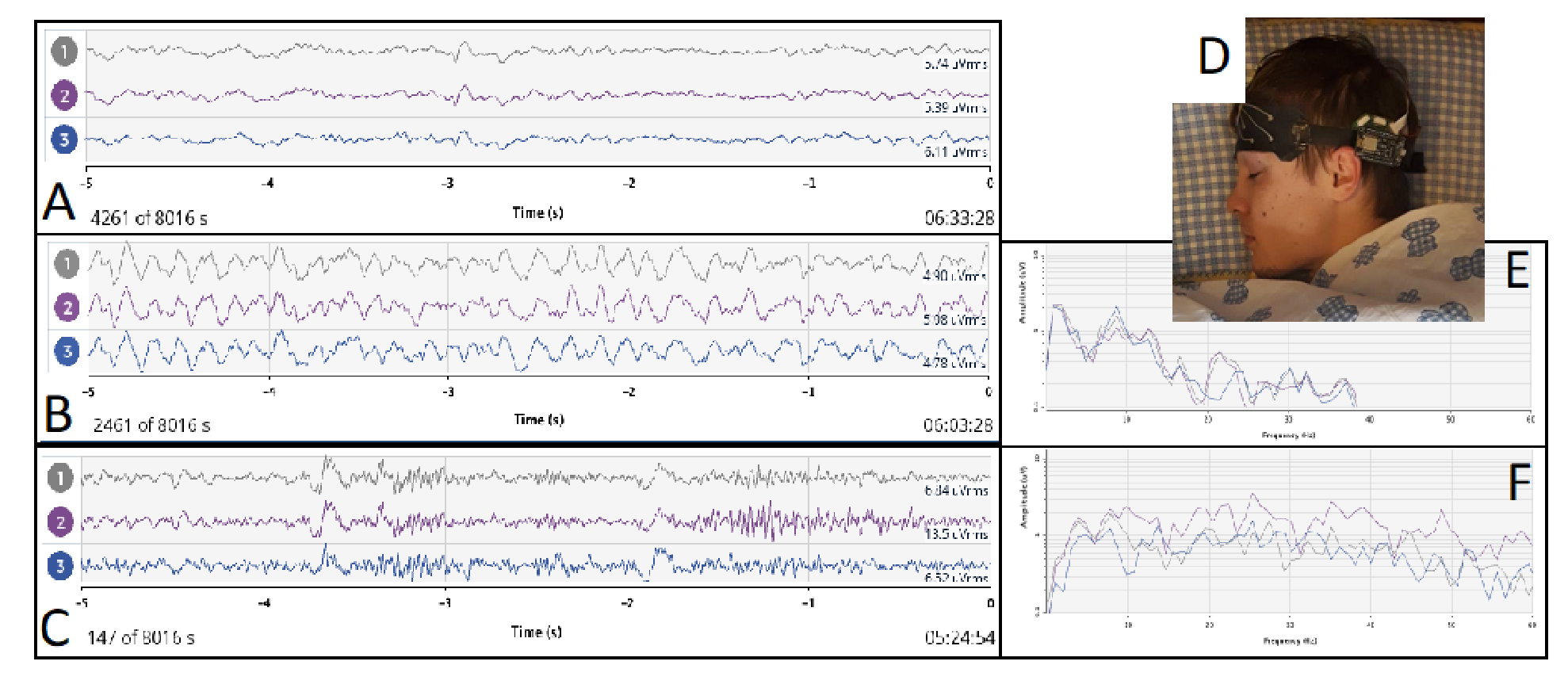
Sleep data acquisition. A: subject wearing the proposed EEG acquisition headband during sleep. B,C: EEG activity during sleep. Low-frequency waves can be observed D: Normal awake EEG activity. E: Predominant frequencies in EEG during sleep. High frequencies in EEG during sleep. High-frequency activity is almost non-existing during sleep F: Existing frequencies in a normal awake EEG

